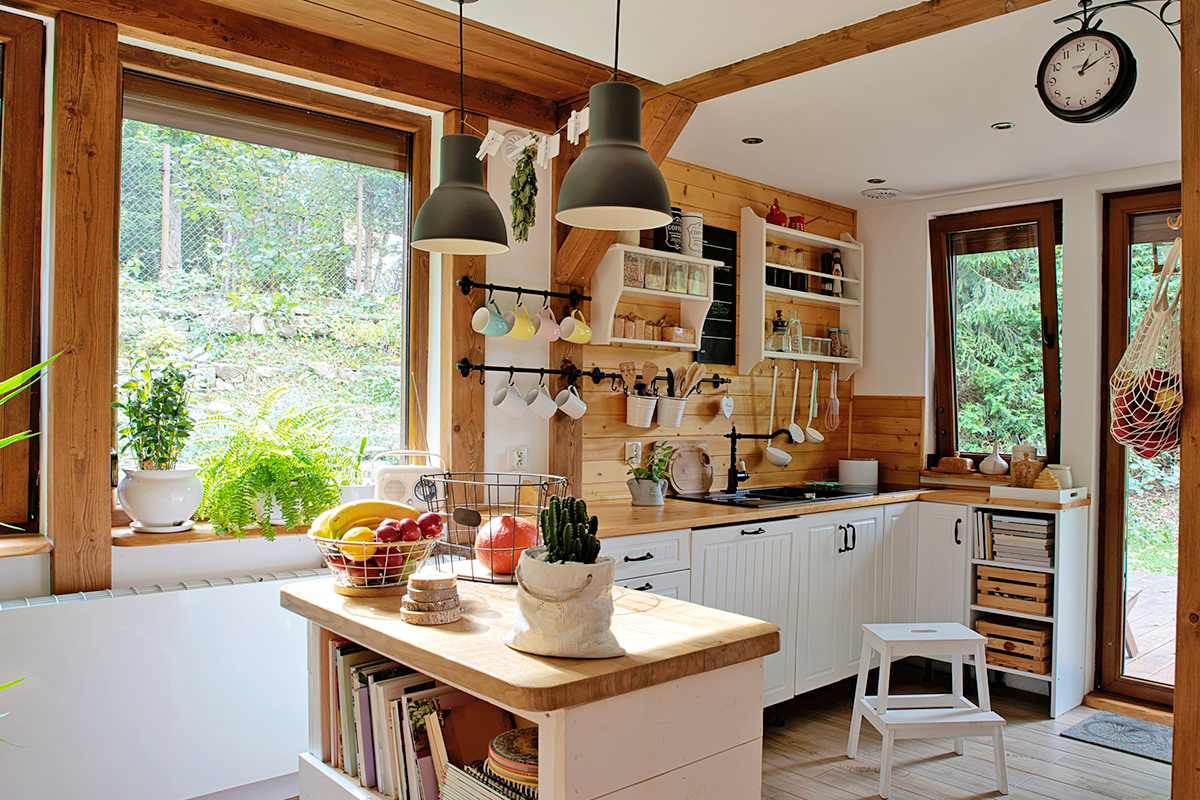Mixing wood tones can instantly elevate a room, adding warmth, interest, and a curated, designer feel. Pulling it off requires more than simply placing different woods side by side, though. Before hauling in an oversized hutch next to your kitchen cabinets, it’s important to understand how to balance tones — and when to stop adding more.
“Mixing wood tones adds depth and character to a space, making it feel more organic and lived-in,” says Vicky Zagordick, interior designer at Wisconsin-based Madison Exteriors and Remodeling. The key? Vary tones intentionally.
Step 1: Identify Your Dominant Wood Tone
To avoid overwhelming your space with too many woods, take note of your dominant wood — likely flooring, cabinets, or a large piece of furniture — and pair it with accent tones. “This way, the eye has a clear ‘base’ to follow, while secondary tones enhance the overall composition,” Zagordick says.
She recommends following a 60-30-10 rule: 60% dominant wood, 30% secondary tone, and 10% accent wood for visual punctuation. Don’t exceed more than three tones, though. That’s the maximum; with more, a space would feel scattered and chaotic.
Step 2: Match the Undertones
Wood undertones fall into three categories: warm, cool, or neutral. Even if your oak cabinets are a drastically different shade from your walnut dining table, a consistent undertone ties them together. “Layering textures, like matte and polished finishes, can also help create a harmonious look,” Zagordick says.
More from our network
House Outlook is part of Inbox Studio, which publishes content that uplifts, informs, and inspires.
Step 3: Compare or Contrast
Decide whether you want to match your woods or opt for contrasting tones. As long as you’re intentional about it, either look can feel cohesive. Comparing results in a simple, unified look; contrasting is more dimensional.
“Think of the wood stains as colors,” says Shelby Adamson, principal interior designer of Little Black Fox, a residential interior design firm servicing the Southeast. “Sometimes pairing contrasting colors and tones can be beautiful, and other times the wood stains will draw tones that are undesirable. Consider one stain a neutral so that the other can stand out more.”
Step 4: Introduce New Tones Slowly
If your existing furniture is all the same finish, start introducing variety via accessories. Adamson recommends adding in wood accents through curtain rods, sculptural art, lamps, or other unexpected wooden decor pieces. To bridge the gap between contrasting woods, look for similar or complementary colors in rugs, textiles, or artwork.
Zagordick advises clients to consider wood grain patterns, too. “Mixing fine and bold grains adds another layer of sophistication when done thoughtfully,” she says.



















